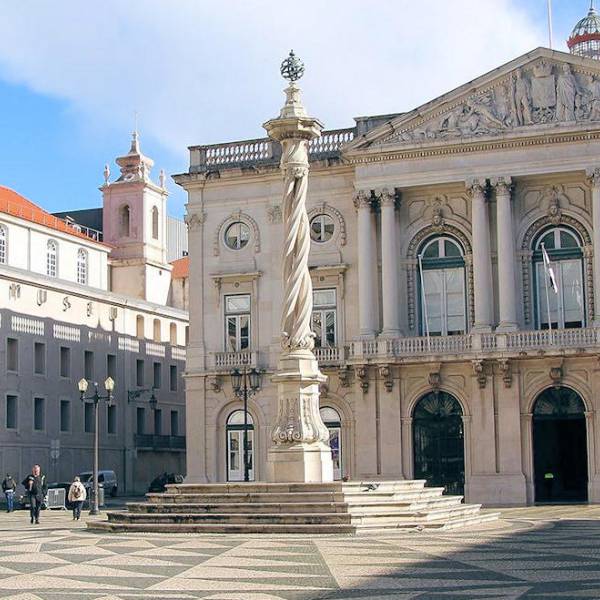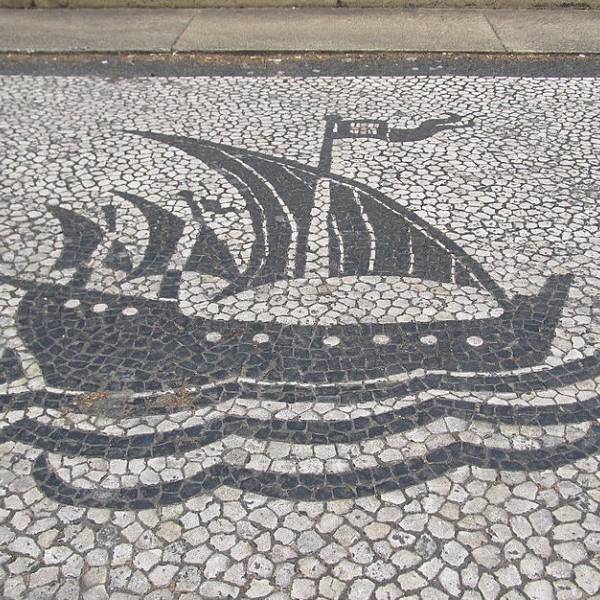One of the prominent buildings in the square is the City Hall, known as Paços do Concelho de Lisboa, which serves as the seat of the Lisbon municipal government. This neoclassical structure, with its elegant façade, stands as a testament to the city's administrative importance. It was from the balcony of the City Hall that the Portuguese republic was proclaimed on October 5, 1910, marking a pivotal moment in the country's history.
The architecture of the City Hall is noteworthy, featuring a stunning central staircase designed by architect José Luís Monteiro. Inside, visitors can admire exquisite paintings by renowned artists such as Pereira Cão, Columbano Bordalo Pinheiro, José Rodrigues, and José Malhoa. Guided tours are available on Sundays, allowing visitors to delve deeper into the historical and artistic significance of this impressive building.
The current City Hall replaced a previous structure that was severely damaged by a fire in 1863. Designed by architect Domingos Parente da Silva, the new building underwent further refurbishment following a fire incident in 1996. The resilience and adaptability of the City Hall reflect the city's determination to preserve its rich heritage.
At the center of Praça do Município stands the Pelourinho de Lisboa, a pillory classified as a National Monument since 1910. This unique monument was constructed by Eugénio dos Santos de Carvalho after the devastating earthquake of 1755. Made of iron, marble, and stone, the octagonal platform features a column with a spiral design. Crowned by an armillary sphere created by Pêro Pinheiro, the pillory stands approximately 10 meters tall and serves as a tangible link to Lisbon's medieval past.
Surrounding the square, visitors can also explore other notable buildings and landmarks. The Appeals Court and Naval Arsenal stand as architectural marvels, contributing to the visual appeal of the square. A branch of CTT, Portugal's post office, is conveniently located within the vicinity. The entire square is adorned with beautiful calçada pavement, showcasing the traditional Portuguese mosaic patterns.
Praça do Município is not only a place of historical significance but also a hub of cultural activity. Just off the square's northeast corner, you'll find the Money Museum (Museu do Dinheiro), which presents the fascinating history and evolution of money in Portugal and around the world. Housed in the former Igreja of São Julião, the museum offers insights into the country's monetary heritage, with the crypt of the church preserving an original remnant of Lisbon's medieval wall known as "King Dinis' Wall".
Lisbon.vip Recommends
Getting to Praça do Município is convenient, with several transportation options available. The nearest Lisbon metro stations include Terreiro do Paço, Baixa-Chiado, Rossio, and Cais do Sodré, all within a 10-minute walk to the west. Additionally, Tram 28 and various Lisbon bus routes, such as 728, 737, 735, 759, and 794, pass through the area, providing easy access for visitors.
Beyond its architectural beauty and historical significance, Praça do Município serves as a gathering place for various events and celebrations. The square holds a special place in the hearts of Lisbon's residents, as it continues to host commemorations for the 5th of October revolution, which marked the end of the monarchy and the dawn of the Portuguese republic.
Praça do Município is a captivating destination that encapsulates Lisbon's charm, history, and vibrant atmosphere. Whether you come to admire the architectural splendor, explore the cultural attractions, or simply soak in the ambiance of this lively square, a visit to Praça do Município is sure to leave a lasting impression.
Map View







